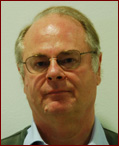Atomistic Simulations of Point Defects in Bulk and Nano Ceria
SEMINAR
Atomistic Simulations of Point Defects in Bulk and Nano Ceria
Speaker:A. N. Cormack
Inamori School of Engineering
NY State College of Ceramics
Alfred University
Date: 14:00 p.m. June 11, 2016
Venue: Meeting Room 314, No. 1 Building, SICCAS
 Curriculum Vitae:
Curriculum Vitae:
Alastair N. Cormack is the Van Derck Fréchette Professor of Ceramic Science at Alfred University. Educated at the University of Cambridge (M.A.), and the University of Wales, Aberystwyth (M.Sc. & Ph.D.), he joined the New York State College of Ceramics at Alfred University in 1985
His research interests center on the use of atomistic computer simulations in materials science. Both classical and quantum mechanical (e.g. DFT) methods have been used, as appropriate, to investigate point defect, and related, behavior in crystalline materials, including nano-materials, and the structure and properties of inorganic, silica-based glasses. Techniques include molecular dynamics (MD) and static lattice (molecular mechanics).
Abstract:
Ceria, CeO2, has been called the ceramics’ equivalent of the “best thing since sliced bread”, since it finds use in applications as diverse as electrochemistry and healthcare. The basic property which enables this wide range of uses is its point defect chemistry.
In this talk, we will show how atomistic computer simulations can be employed to probe this defect chemistry. Specifically, we will discuss (i) the interactions between dopants such as gadolinium, and their compensating oxygen vacancies, to form nanodomains in bulk ceria and (ii) reduction and doping in ceria nano-particles.
Recently, thin films of reduced or ceria have been found to exhibit giant electrostruction, which has been ascribed to the interplay between R3+ cations and oxygen vacancies. In addressing the question of whether oxygen vacancies sit in nearest neighbor or next nearest neighbor positions to these cations, we will comment on the perils of treating simulation packages as black box tools.


 当前位置:
当前位置:

